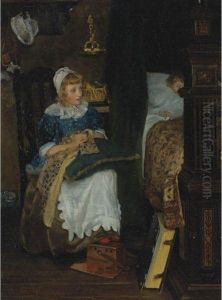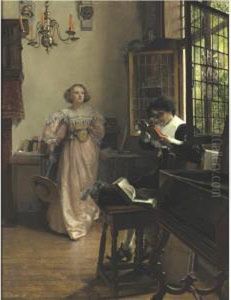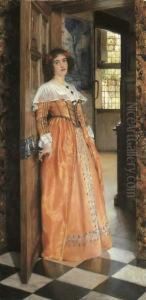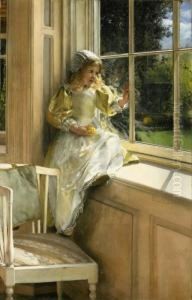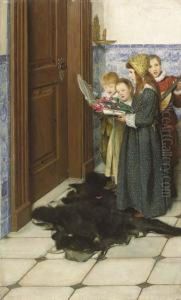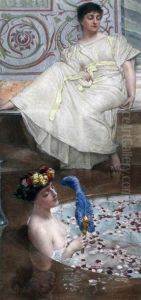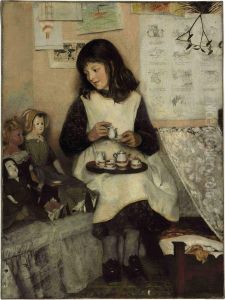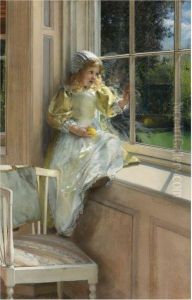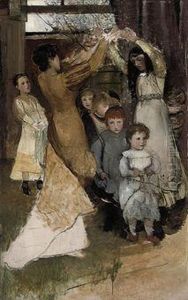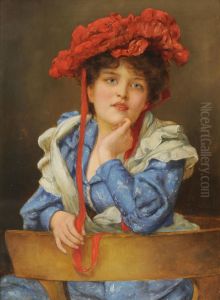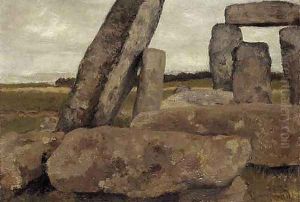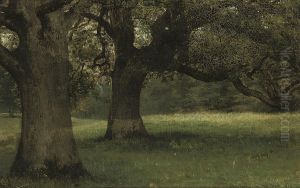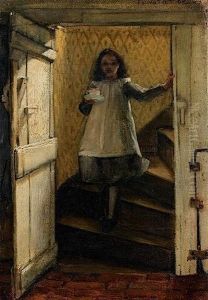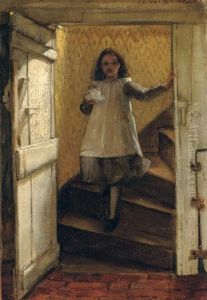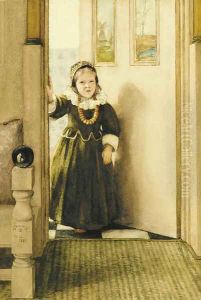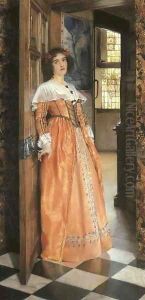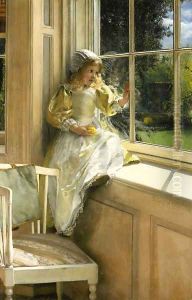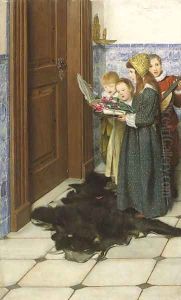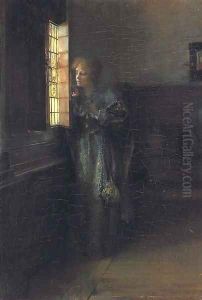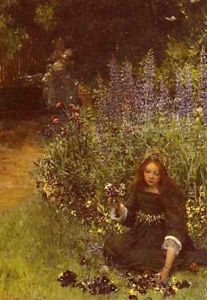Laura Theresa Epps Alma-Tadema Paintings
Laura Theresa Epps, later known as Lady Laura Theresa Alma-Tadema, was a British painter in the late 19th century, renowned for her detailed and delicate portraiture, genre paintings, and scenes of domestic life. Born on January 16, 1852, in London, she was one of the seven children of Dr. George Napoleon Epps, a homeopath, and Sarah Epps. From a young age, she displayed a keen interest in art, which led her to pursue her passion professionally.
Laura received her initial training at the Female School of Art, later the Royal College of Art. Her talent quickly became apparent, and she began exhibiting her works at various venues, including the Royal Academy of Arts. It was during this time that she met the Dutch painter Sir Lawrence Alma-Tadema, who was already established and well-respected in the art world. The two married in 1871 when Laura was 19 and Lawrence was 34. After her marriage, she often went by the name Laura Alma-Tadema.
As an artist, Laura Alma-Tadema became known for her highly detailed works that often depicted women and children in domestic and social settings. Her style was influenced by her husband's work, which was characterized by its classical themes and detailed rendering of marble and flowers. However, Laura developed her own distinct style and thematic focus, with an emphasis on contemporary Victorian life and an acute attention to detail, texture, and color.
Despite the challenges faced by women artists during her time, Laura Alma-Tadema achieved significant success. She exhibited her work across Europe and the United States, earning medals for her artistic accomplishments. Her paintings were well-received for their charm, refinement, and technical skill.
Laura Alma-Tadema's life was marked by both artistic success and personal tragedy. She was a dedicated mother to her two daughters. Her health began to decline in the early 1900s, and she passed away on August 15, 1909, at the age of 57. After her death, her work, like that of many women artists of the period, was largely forgotten. However, the late 20th and early 21st centuries saw a resurgence of interest in her art, with recognition of her contributions to the world of Victorian painting. Her works are now appreciated for their portrayal of the private lives of women and their role in society during her era.

